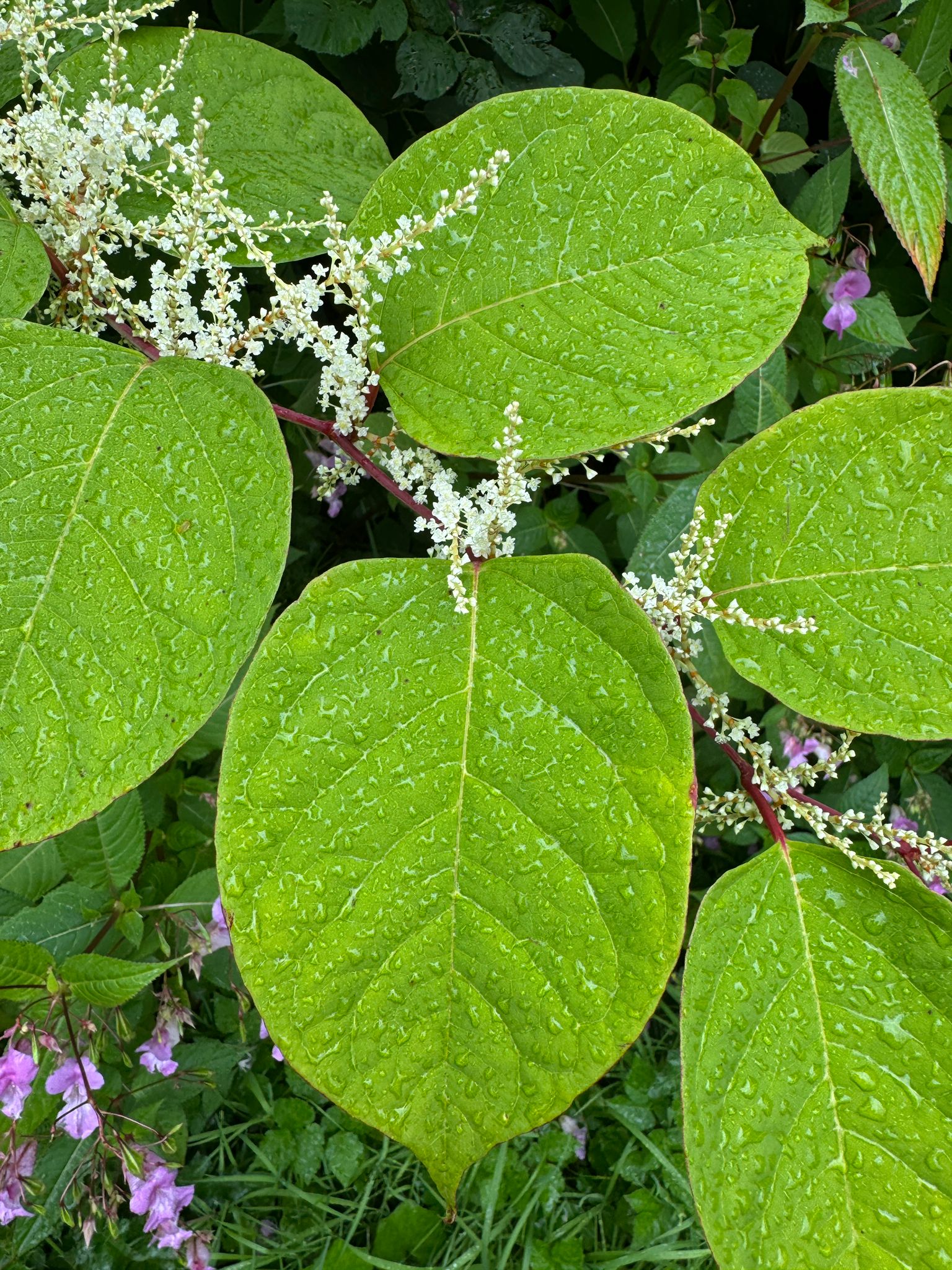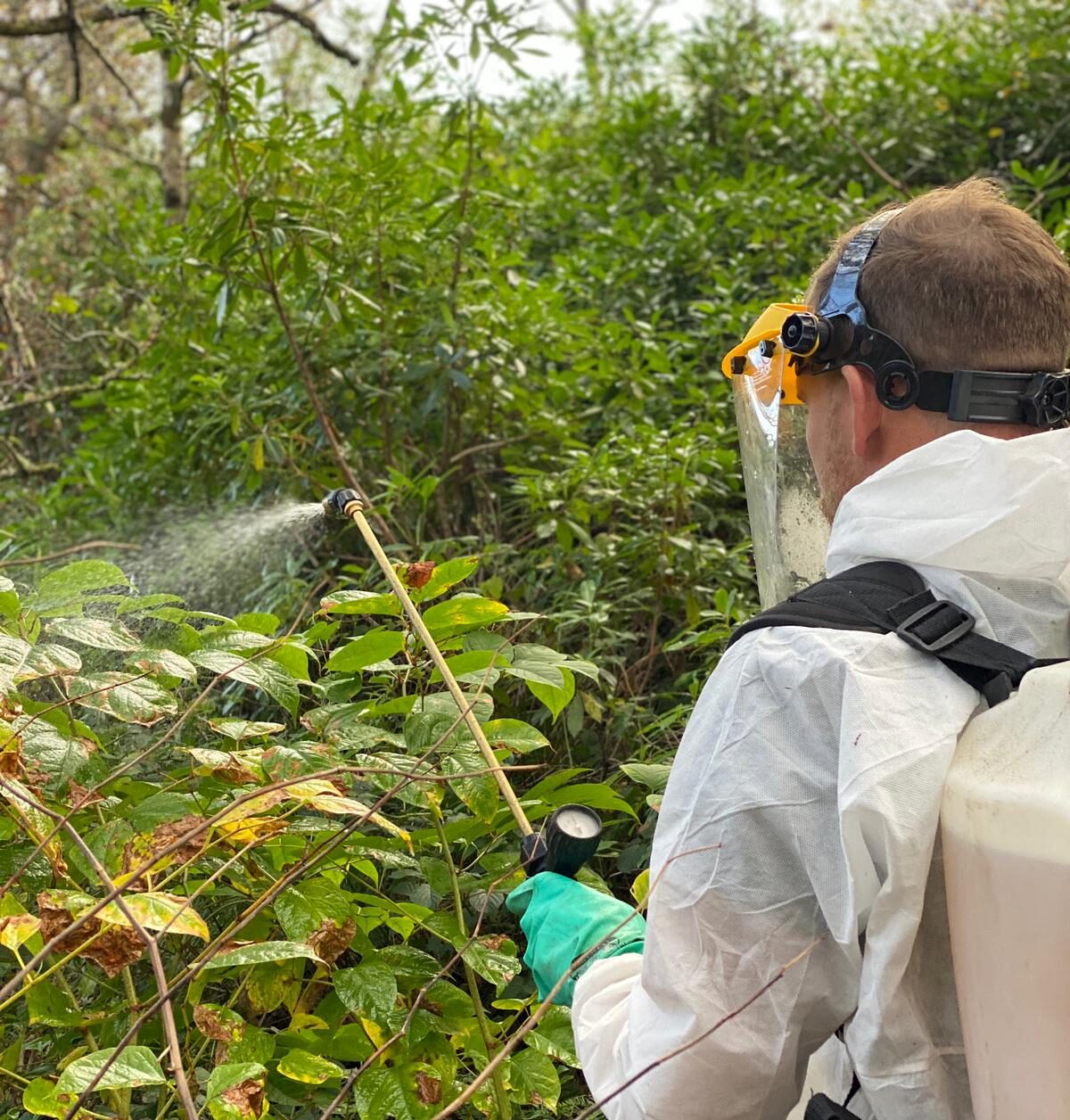Salmonberry
Invasive Salmonberry professionally removed by JBB Knotweed Solutions. Reliable, long-term control services available across Scotland.
What is Salmonberry?
Salmonberry (Rubus spectabilis) is an invasive shrub species that resembles raspberry and is becoming increasingly problematic in parts of Scotland. Originally introduced for ornamental and wildlife purposes, it quickly forms dense thickets, particularly in damp, wooded areas.
Its aggressive growth allows it to spread unchecked, suppressing native plants and disrupting habitats.
Native to the west coast of North America, Salmonberry was introduced to the UK in the 19th century. It thrives in Scotland’s moist climate and acidic soils, particularly in gardens, woodland edges, and riverbanks, where it can become dominant if left unmanaged.
How Does Salmonberry Spread?
Salmonberry spreads rapidly primarily through underground rhizomes (roots) and layering of arching stems. Birds are drawn to the seed-bearing fruit of salmonberry bushes, consuming the berries and naturally spreading the seeds via their droppings.
Issues Caused by Salmonberry
What are the Environmental and Structural Risks?
Salmonberry forms dense colonies that outcompete native ground flora and tree seedlings. This reduces biodiversity and alters the structure of woodland ecosystems. Its rapid spread can be especially damaging to sensitive habitats and areas undergoing ecological restoration.
What are my Legal Responsibilities?
While not currently listed on Schedule 9 of the Wildlife and Countryside Act 1981, landowners still have a duty to control invasive species under general biosecurity guidance. Preventing spread onto neighbouring land is key, especially in conservation or woodland zones.
Identification of Salmonberry Throughout the Year
Seasonal Growth Cycle
- Spring: Bright pink flowers emerge before leaves; new canes begin to grow.
- Summer: Edible orange-red berries appear; rapid shoot development.
- Autumn: Leaves begin to yellow; canes start to harden.
- Winter: Deciduous plant drops leaves but woody stems remain.
Detailed Salmonberry Characteristics
- Stems: Erect or arching canes, often forming dense thickets; thornless or lightly armed.
- Leaves: Three-lobed, sharply toothed, similar to raspberry leaves.
- Flowers: Large, vivid pink or magenta flowers appearing in early spring.
- Berries: Orange to red, resembling raspberries, forming in clusters.
- Roots: Extensive rhizome system enabling fast vegetative spread.
Treatment and Control of Salmonberry
How to Remove Salmonberry
At JBB Knotweed Solutions Ltd, we provide tailored removal strategies for Salmonberry infestations across Scotland, with a focus on long-term site recovery.
Our Treatment Methods
- Herbicidal Treatment: Effective during the growing season with foliar applications targeting young shoots. Repeated treatment may be required due to rhizome regrowth potential.
- Mechanical/Manual Removal: In cases of extensive infestation, we offer professional excavation and disposal. Removing root systems is key to preventing regrowth from underground runners.
Book a Survey
We can tell you if you definitely have Salmonberry on your property and recommend the best course of action.
More from JBB Knotweed Solutions



